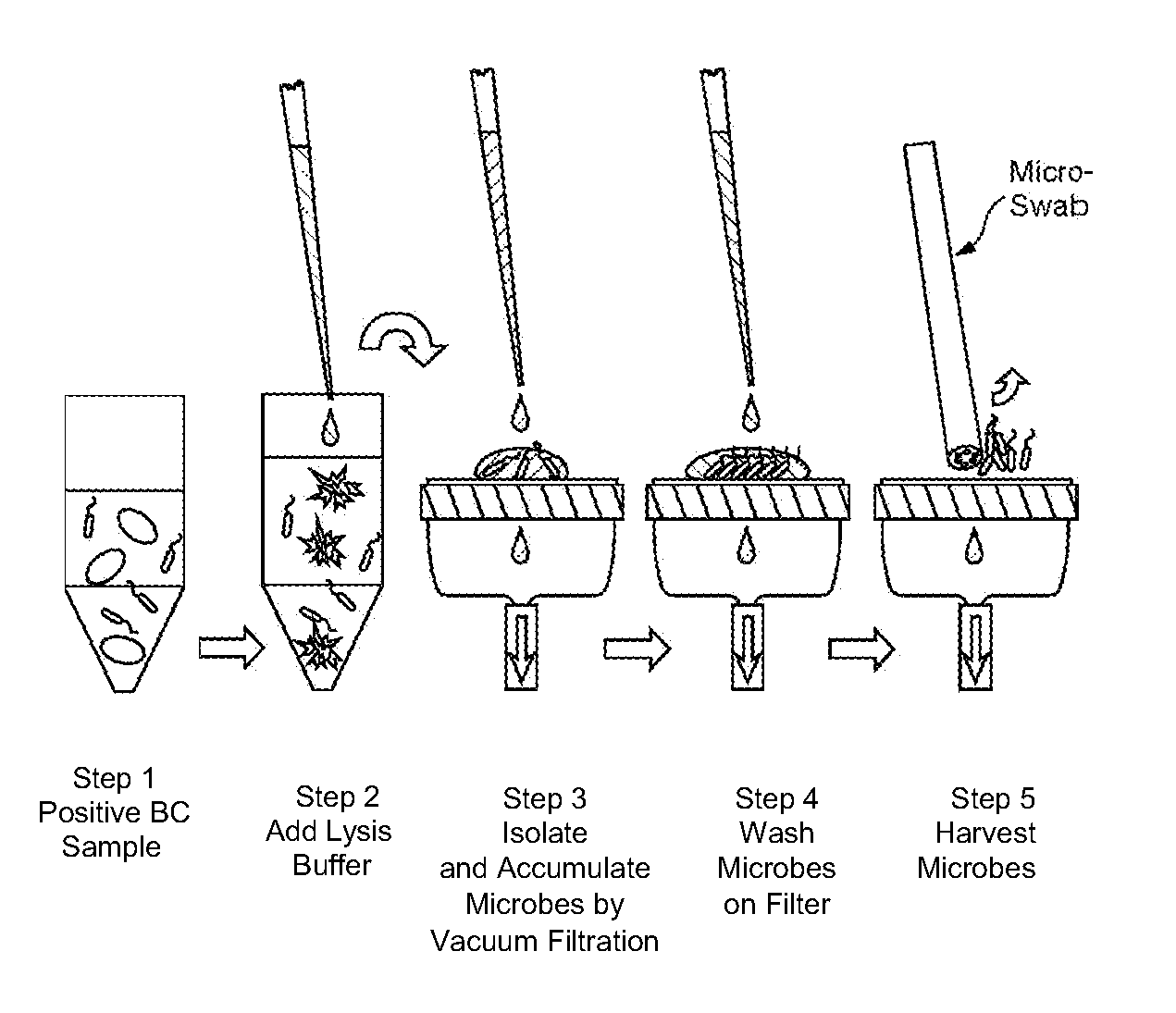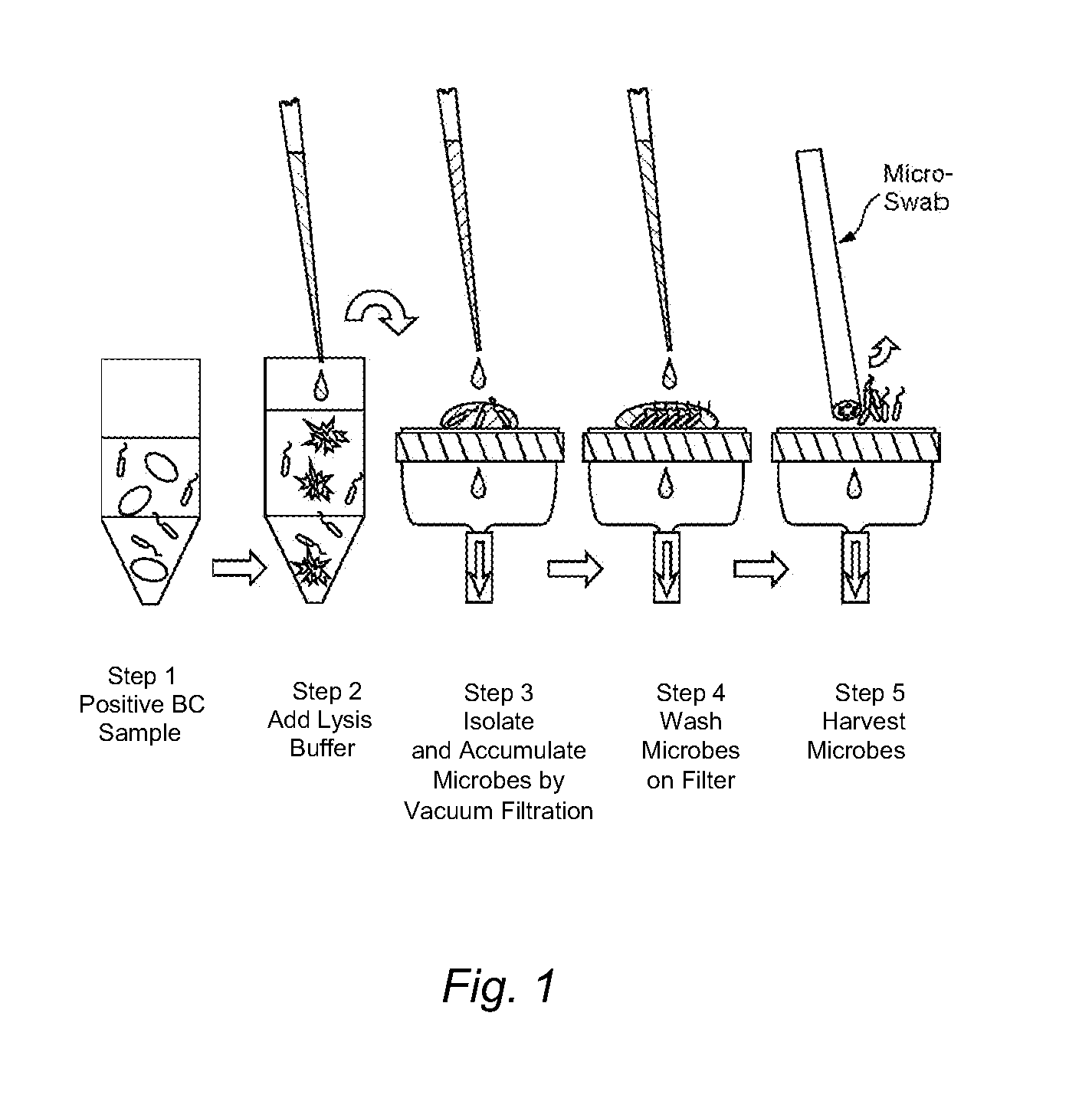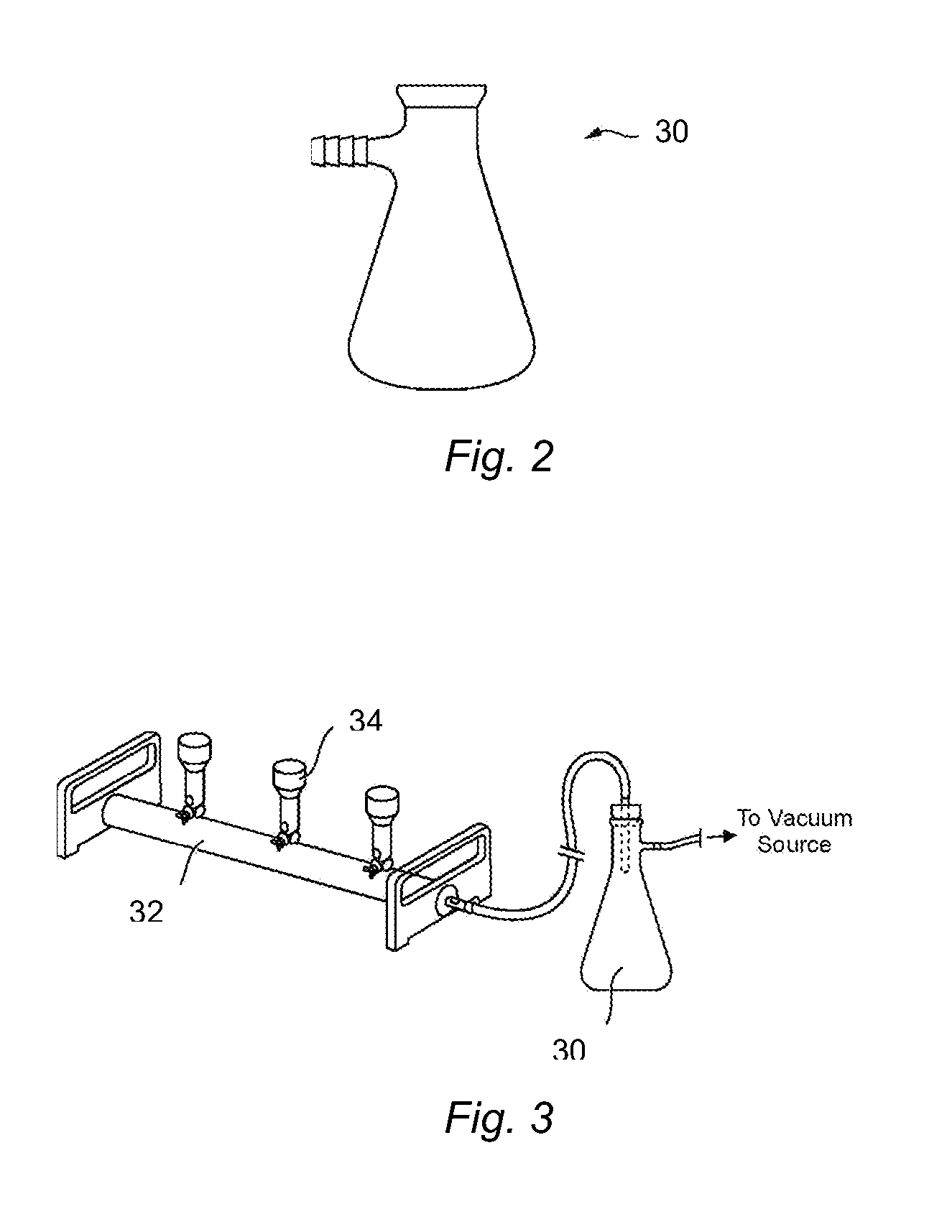Methods and kits for isolating microorganisms from culture
a technology of microorganisms and kits, which is applied in the field of methods and kits for isolating, accumulating and/or purifying microorganisms from samples, can solve the problems of bloodstream infections, high morbidity and mortality, and take several days to perform
- Summary
- Abstract
- Description
- Claims
- Application Information
AI Technical Summary
Benefits of technology
Problems solved by technology
Method used
Image
Examples
Embodiment Construction
Definitions
[0026]As used herein, “a,”“an,” or “the” can mean one or more than one. For example, “a” cell can mean a single cell or a multiplicity of cells.
[0027]Also as used herein, “and / or” refers to and encompasses any and all possible combinations of one or more of the associated listed items, as well as the lack of combinations when interpreted in the alternative (“or”).
[0028]Furthermore, the term “about,” as used herein when referring to a measurable value such as an amount of a compound or agent of this invention, dose, time, temperature, and the like, is meant to encompass variations of ±20%, ±10%, ±5%, ±1%, ±0.5%, or even ±0.1% of the specified amount.
[0029]As used herein, the term “microorganism” is intended to encompass organisms that are generally unicellular, which can be multiplied and handled in the laboratory, including but not limited to, Gram-positive or Gram-negative bacteria, yeasts, molds, parasites, and mollicutes. Non-limiting examples of Gram-negative bacteria...
PUM
| Property | Measurement | Unit |
|---|---|---|
| pore size | aaaaa | aaaaa |
| temperature | aaaaa | aaaaa |
| temperature | aaaaa | aaaaa |
Abstract
Description
Claims
Application Information
 Login to View More
Login to View More - R&D
- Intellectual Property
- Life Sciences
- Materials
- Tech Scout
- Unparalleled Data Quality
- Higher Quality Content
- 60% Fewer Hallucinations
Browse by: Latest US Patents, China's latest patents, Technical Efficacy Thesaurus, Application Domain, Technology Topic, Popular Technical Reports.
© 2025 PatSnap. All rights reserved.Legal|Privacy policy|Modern Slavery Act Transparency Statement|Sitemap|About US| Contact US: help@patsnap.com



